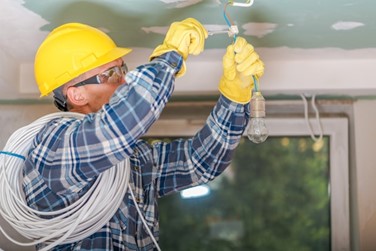In the world of electrical engineering and maintenance, ensuring the safety and reliability of wiring systems is paramount. Heat shrink tubing, a versatile material widely used in electrical applications, plays a crucial role in enhancing electrical insulation and safety. This article explores how shrinkable tubing insulates wires and cables, protecting against electrical shorts, and contributing to overall safety in various electrical systems.
Fluoropolymer shrink tubing is a polymer-based material that shrinks in diameter when exposed to heat. Typically made from materials like polyolefin, fluoropolymer, or neoprene, this tubing is designed to cover and protect electrical components. The shrinking process causes the tubing to tightly conform to the shape of the underlying wire or cable, creating a secure, insulated barrier.
Insulating Wires and Cables
One of the primary functions of these products is to provide electrical insulation. Electrical wires and cables are crucial for transmitting power and signals, but they are often susceptible to environmental factors, mechanical stress, and wear and tear. Heat-Activated shrink tubing offers a protective layer that guards against these issues.
When the product is applied to wires or cables, it creates a robust insulation layer that helps prevent electrical currents from escaping or short-circuiting. This is particularly important in high-voltage applications where even minor insulation failures can lead to significant hazards. The tubing's insulating properties ensure that electrical currents remain contained within the wires, reducing the risk of electrical shocks, short circuits, and fires.
Protecting Against Electrical Shorts
Electrical shorts occur when the current flows along an unintended path, often due to damaged insulation or exposed wires. Shrink wrap is highly effective in preventing such occurrences. By providing a tight, durable covering over wires and connectors, the tubing shields them from physical damage, moisture, and contaminants that could compromise insulation.
For instance, in automotive applications, tubing is used to protect wiring harnesses from vibration, abrasion, and exposure to harsh chemicals. Without this protective layer, wires could easily become frayed or exposed, increasing the risk of electrical shorts. Similarly, in industrial settings, where cables are often subjected to extreme conditions, shrink tubing offers vital protection against wear and environmental stressors.
Enhancing Safety in Electrical Systems
The safety benefits extend beyond mere insulation and short protection. Its use contributes to a more reliable and safer electrical system overall. Here’s how:
- Mechanical Protection: Shrink wrap provides a mechanical shield for wires and connectors, protecting them from physical damage. This is crucial in environments where cables are subject to movement, vibration, or abrasion. For example, in robotics or machinery, it can prevent mechanical wear and extend the lifespan of critical wiring components.
- Environmental Resistance: Many fluoropolymer shrink tubing materials are designed to withstand harsh environmental conditions. Some types are resistant to moisture, chemicals, and UV radiation. This makes them suitable for use in outdoor or marine applications, where exposure to water and sunlight could otherwise degrade electrical components.
- Enhanced Reliability: By ensuring that wires and connectors are well-insulated and protected, these products help maintain the reliability of electrical systems. This is particularly important in high-reliability sectors such as aerospace, medical devices, and telecommunications, where system failures can have serious consequences.
- Aesthetics and Organization: In addition to functional benefits, it also contributes to the organization and aesthetics of wiring systems. It can help bundle and route wires neatly, reducing clutter and making maintenance and troubleshooting easier.

Application Examples
Fluoropolymer shrink tubing is used in a wide range of applications across various industries:
- Automotive Industry: In vehicles, it is applied to protect wiring harnesses from heat, abrasion, and chemicals. It ensures reliable electrical connections and prevents potential failures.
- Aerospace Sector: In aerospace applications, it provides critical insulation and protection in wiring systems subjected to extreme temperatures and mechanical stresses.
- Consumer Electronics: For consumer electronics, these products safeguards delicate wiring within devices such as smartphones and laptops, enhancing durability and reliability.
- Industrial Equipment: Heat-activated shrink tubing is used to protect cables and wires in machinery and industrial equipment, ensuring they remain functional in demanding environments.
Conclusion
These products are a vital component in the realm of electrical insulation and safety. By providing effective insulation, protecting against electrical shorts, and enhancing overall safety, it ensures the reliable operation of electrical systems across various applications. Whether in automotive, aerospace, or industrial settings, the benefits are clear, making it an essential tool for safeguarding electrical integrity and promoting safety in modern technology.



